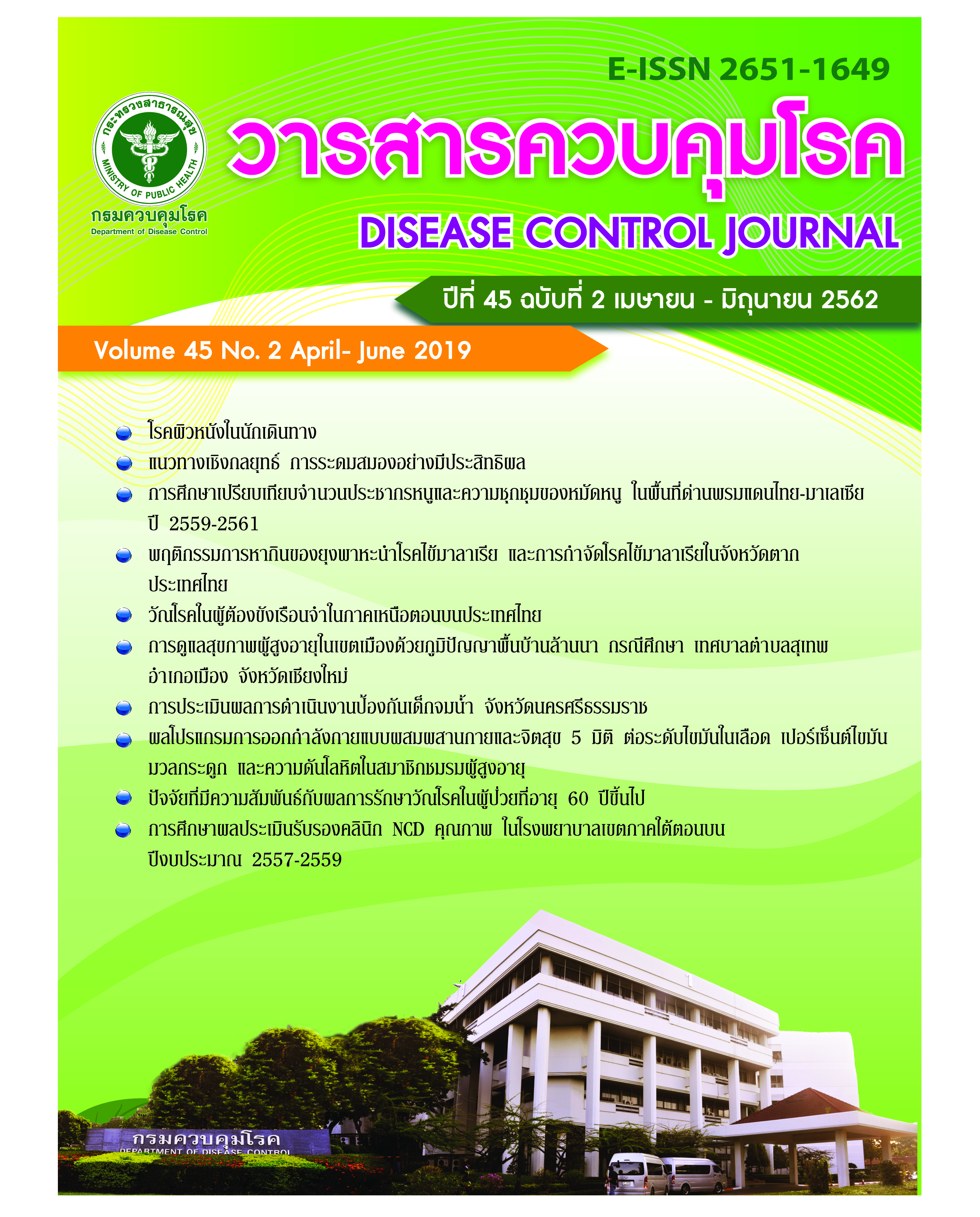Strategic approach to effective brainstorming
DOI:
https://doi.org/10.14456/dcj.2019.2Keywords:
strategic approach, brainstorming, effectiveAbstract
Nominal and interactive brainstorming techniques have widely been used in the generation of numerous ideas based on specific brainstorming issues to which a diverse group of participants has responded. Here, the authors elaborated on their explicit knowledge and experience in applying these effective brainstorming techniques to develop strategic approaches to modeling an appropriately-designed malaria elimination program through malaria elimination management by the local administrative organization and multisectoral collaboration. Effective brainstorming will generate learning process and can seek the real and concrete solutions to addressing the local malaria problem, thusensuring that the target of National Malaria Elimination Strategy 2017-2026 is met.
Downloads
References
2. De Bono E. Serious creativity: how to be creative under pressure and turn ideas into action. United Kingdom: Random House; 2015.
3. De Bono E. Serious creativity: using the power of lateral thinking to create new ideas. New York: Harper Business; 1992.
4. Brown V, Paulus PB. A simple dynamic model of social factors in group brainstorming. Small Group Res 1996;27:91-114.
5. Satitvipawee P, Wongkhang W, Pattanasin S, Hoithong P, Bhumiratana A. Predictors of malaria-association with rubber plantations in Thailand. BMC Public Health 2012;12:1115.
6. Putman VL, Paulus PB. Brainstorming, brainstorming rules and decision making. J Creat Behav 2009;43:29-40.
7. Rietzschel EF, Nijstad BA, Stroebe W. Productivity is not enough: a comparison of interactive and nominal brainstorming groups on idea generation and selection. J Exp Soc Psychol 2006;42:244-51.
8. Henningsen, DD, Henningsen MLM. Generating ideas about the uses of brainstorming: reconsidering the losses and gains of brainstorming groups relative to nominal groups. Southern Commun J 2013:78:42-55.
9. Rietzschel EF, Nijstad BA, Stroebe W. The selection of creative ideas after individual idea generation: choosing between creativity and impact. Br J Psychol 2010;101:47-68.
10. Kunifuji S. A Japanese problem solving approach: the KJ-Ho method. In: Andrzej M.J. Skulimowski, editors. Proceedings of KICSS' 2013. Kraków: Progress & Business Publishers; 2013. p. 333-8.
11. Scupin R. The KJ method: a technique for analyzing data derived from Japanese Ethnology. Human Org 1997;56:233-7.
12. Miller LE. Evidence-based instruction: a classroom experiment comparing nominal and brainstorming groups. Org Manag J 2009;6:229–38.
Downloads
Published
How to Cite
Issue
Section
License
Articles published in the Disease Control Journal are considered as academic work, research or analysis of the personal opinion of the authors, not the opinion of the Thailand Department of Disease Control or editorial team. The authors must be responsible for their articles.






